
Hadrian's Gate or Uchkapılar, also known as the Triple Gate, Three Gates, Three-Door Gate or Castle Gate (Kale Kapısı) is an ancient Roman gate in Antalya, which is one of the most famous and significant sights of the city.
The gate was erected and named after the Roman emperor Hadrian, who visited the city in 130.
This is the only preserved entrance gate in the walls that once surrounded the city and the harbor, which lead to the old town of Antalya (Kaleici, Kaleiçi).
Hadrian's Gate is well preserved, largely due to the fact that it was previously incorporated into city wall and have not been used for a long time. The gate was discovered in the 1950s during the demolition of the city walls. In 1959, the gate was restored.
The height of the gate is about 8 meters (26.2 feet).
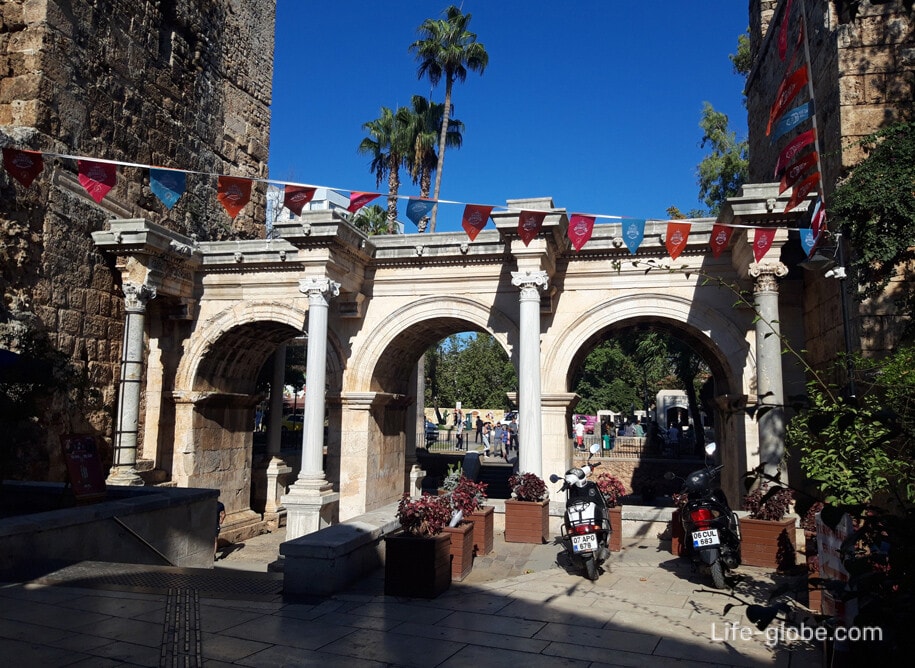
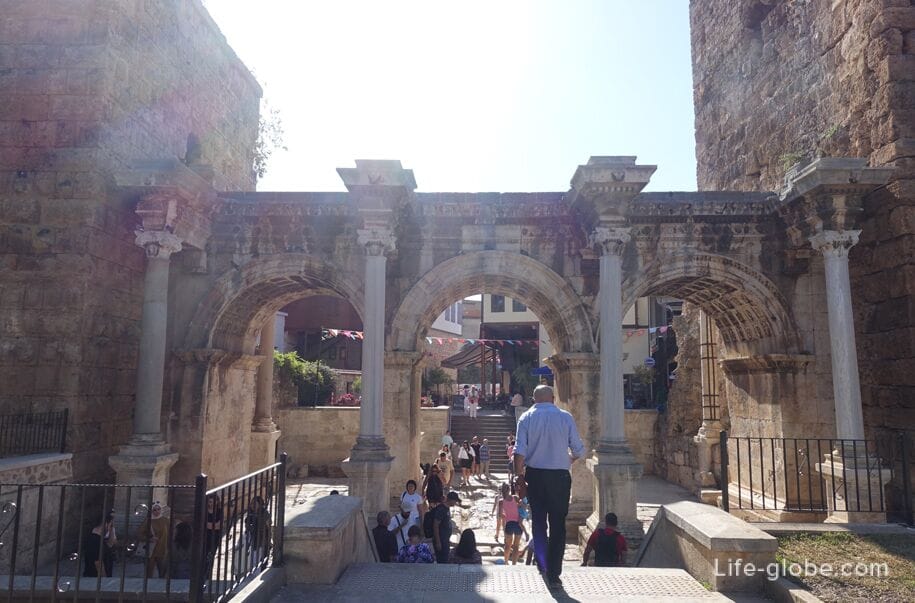
During the reconstruction, bronze letters were found at the foot of the gate, which were part of the inscription on the gate in honor of Adrian. Subsequently, the letters were distributed among different museums and private collections around the world. Nine letters are in Vienna, two are in Berlin, and several more are in England: in the British Museum in London and in the Ashmolean Museum in Oxford.
Today, Hadrian's Gate in Antalya is a monumental triumphal arch consisting of two facades with three arched openings-passages and columns towering over four pylons.
The gate pillars are made of granite, while the rest is made of white marble.
Three archways are decorated with floral and rosette reliefs. The gate also includes a frieze decorated with floral motifs and an ornate cornice with lion heads.
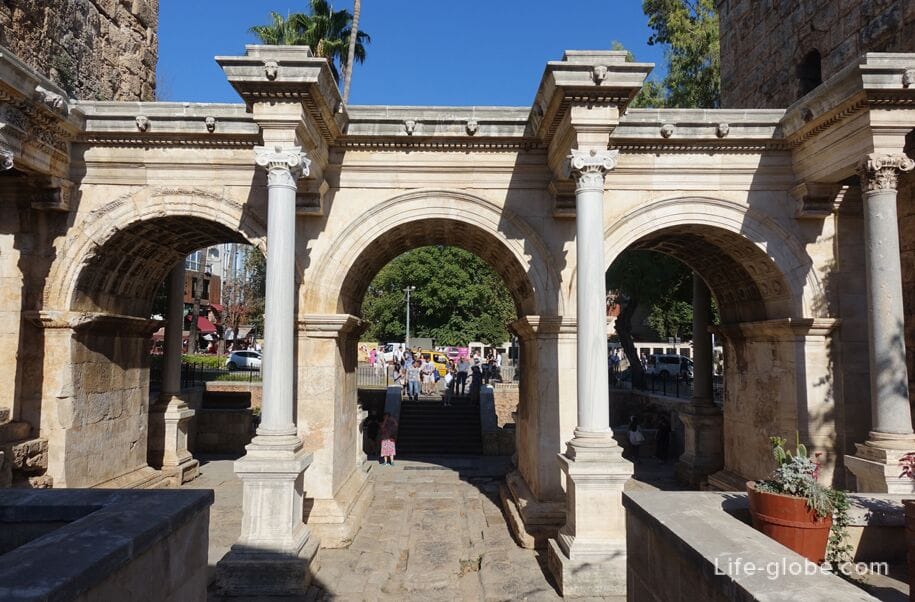
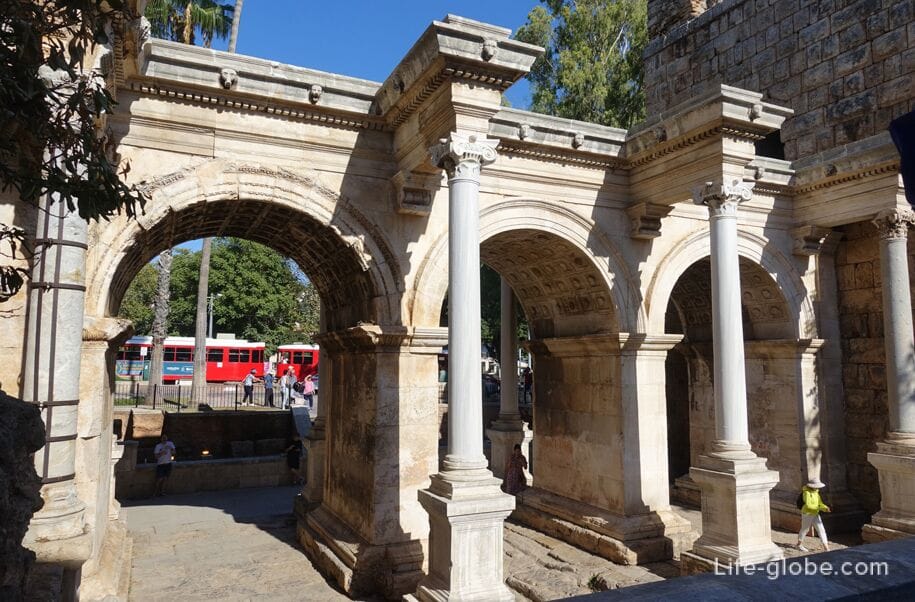

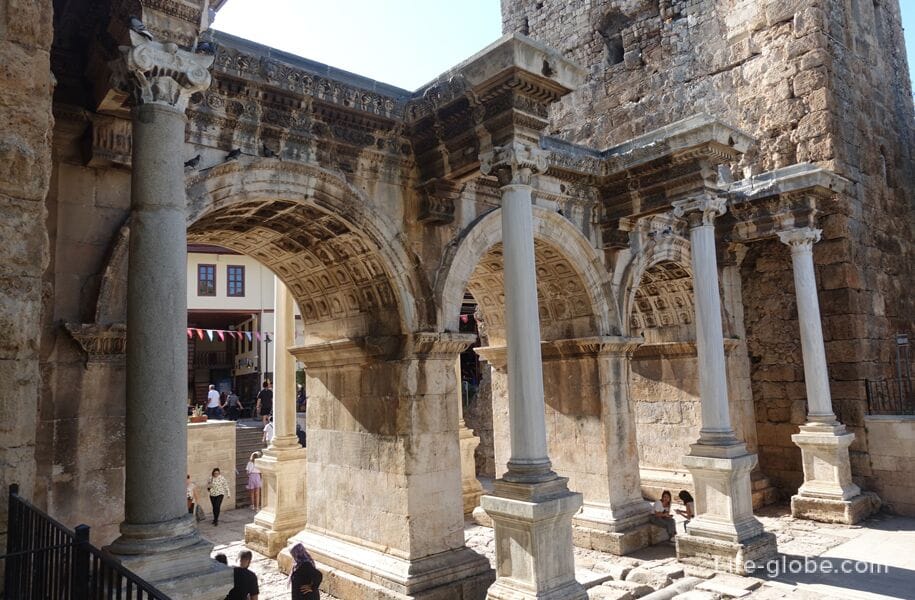
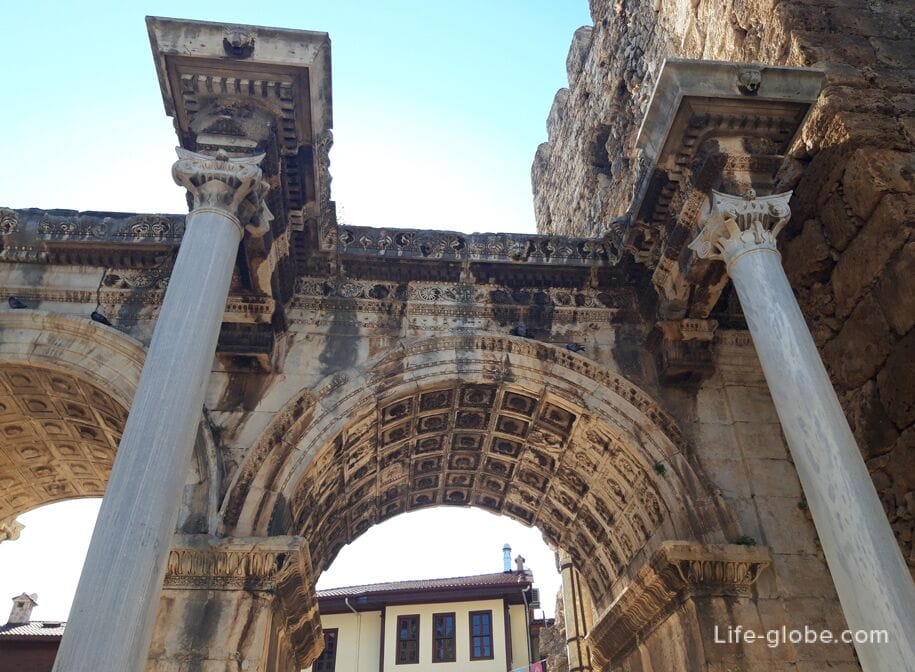
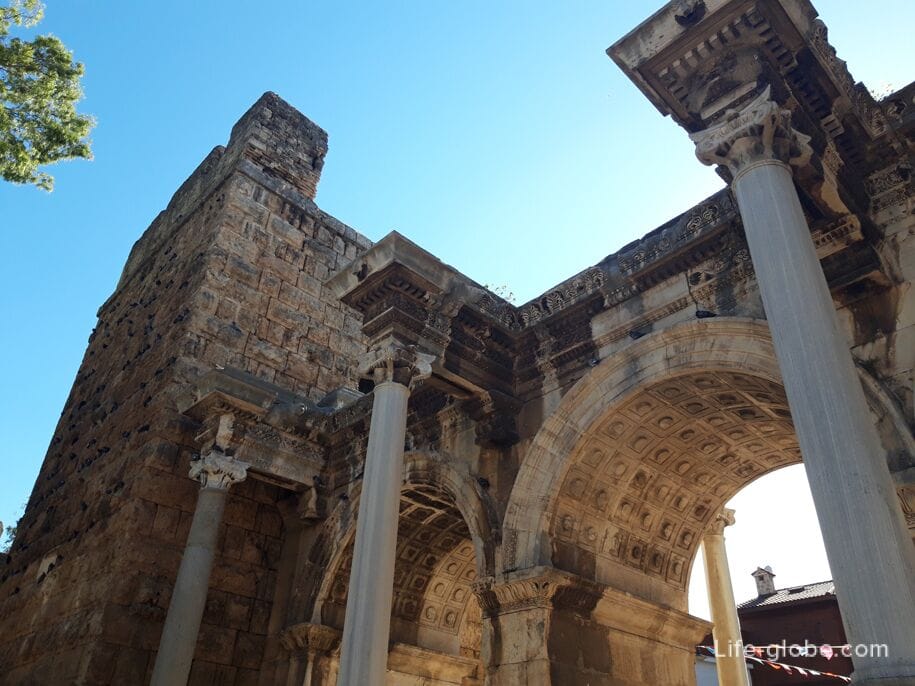
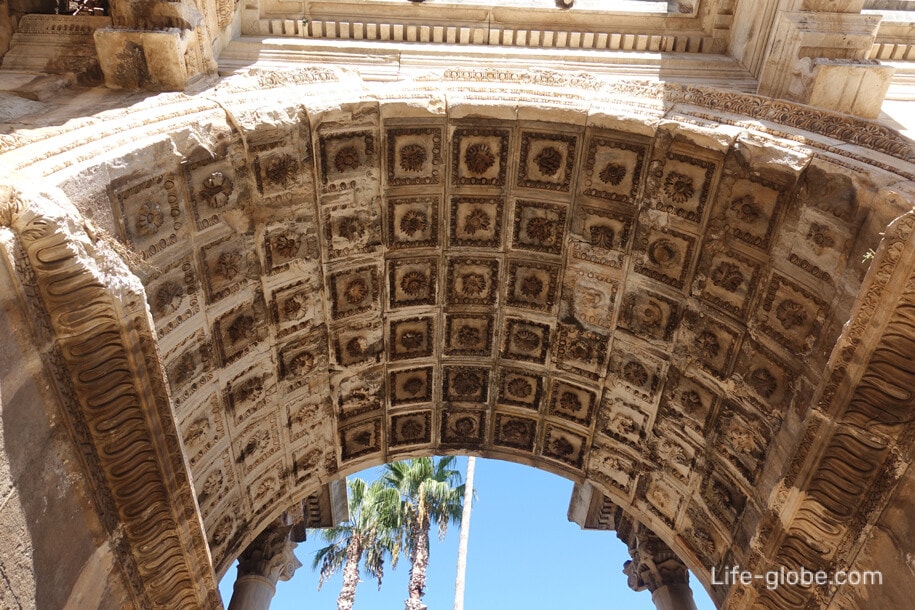
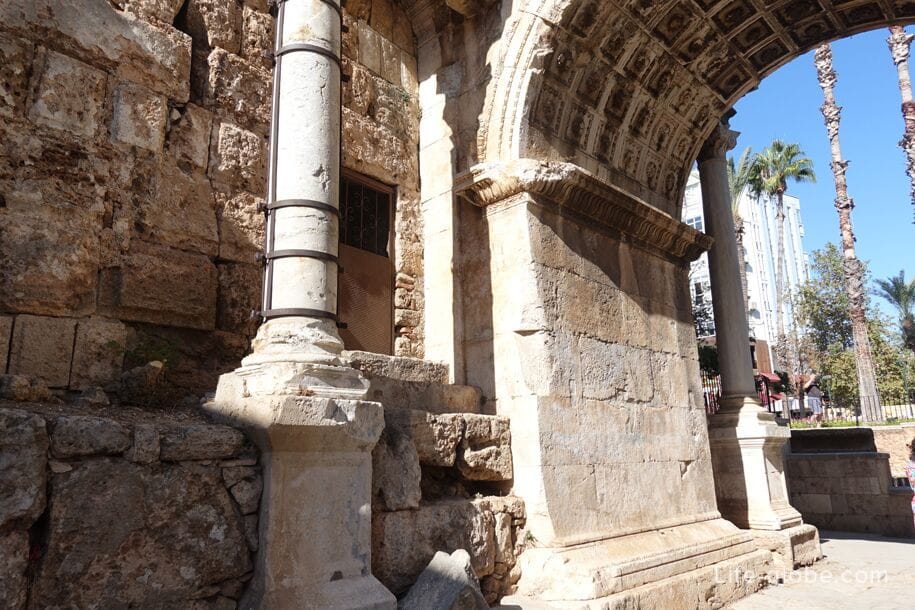
Anyone can now pass through the gate arches. Steps lead to the arches.
The base of the gate is below the current ground level. The sidewalk was removed to show the original Roman-era road, where deep grooves are still visible in the place where the sidewalk was erased by numerous carts entering and leaving the city.
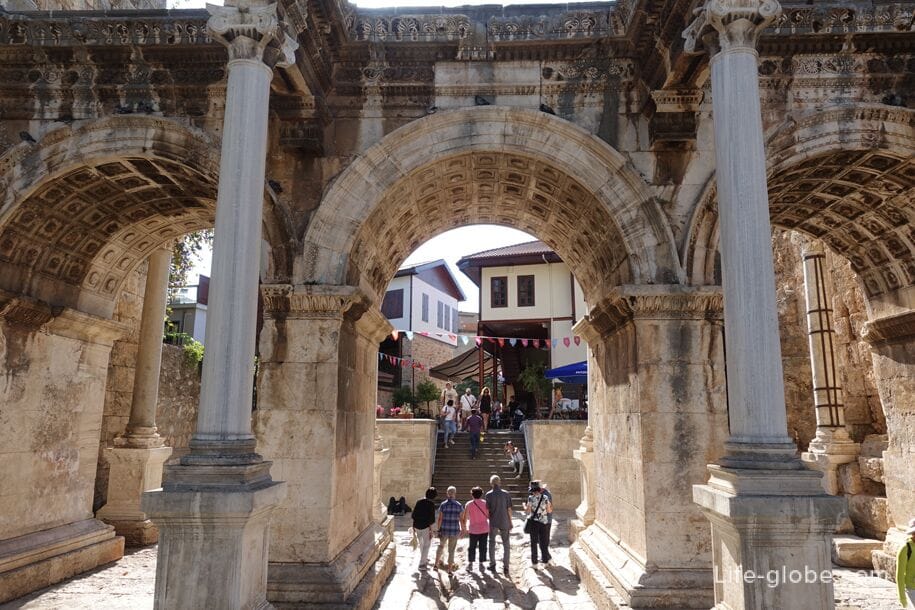

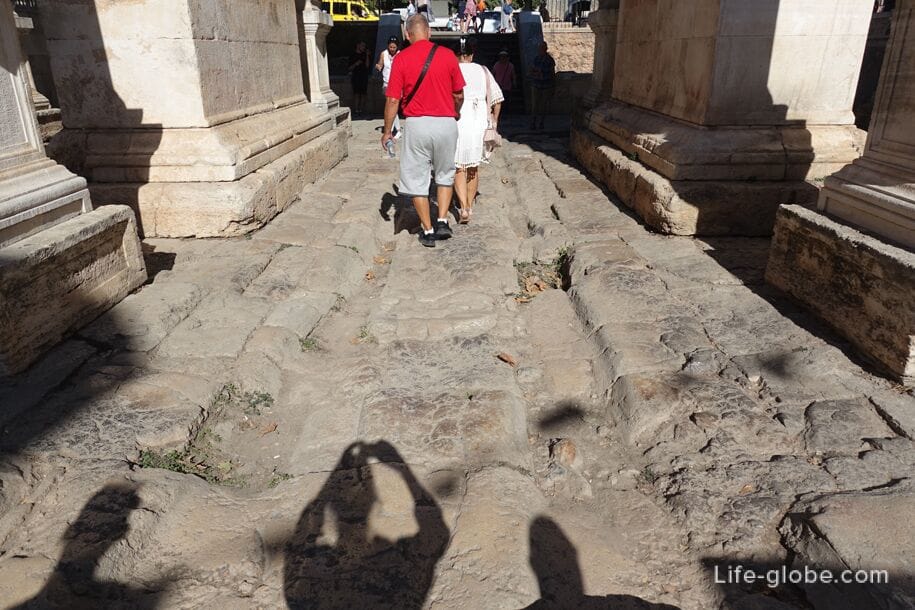
On both sides of the gate, south and north, there are former watchtowers.
The south tower, known as Julia Sancta, dates back to the Roman era, and was probably built independently of the gate. The lower part of the North Tower dates back to Roman times, and its upper part was rebuilt in the first half of the thirteenth century during the reign of the Seljuk Sultan Alaeddin Keykubat I and contains an inscription in Arabic script.
Parts of the former city walls depart from the towers.

North Tower and walls
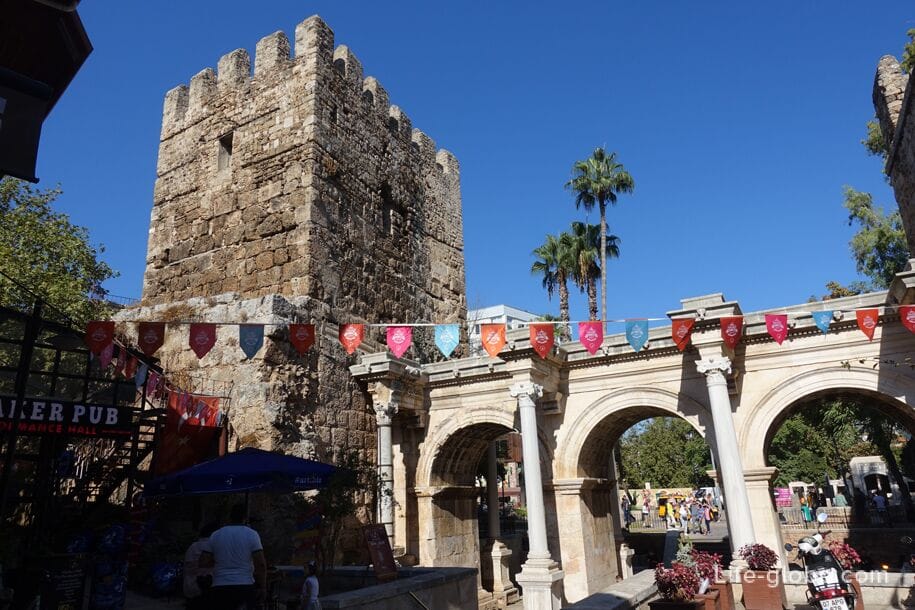
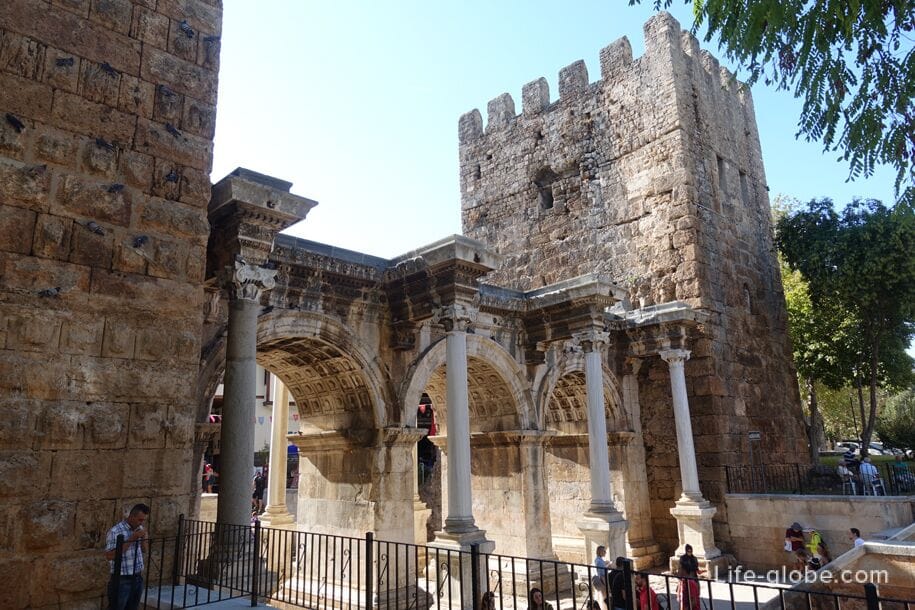
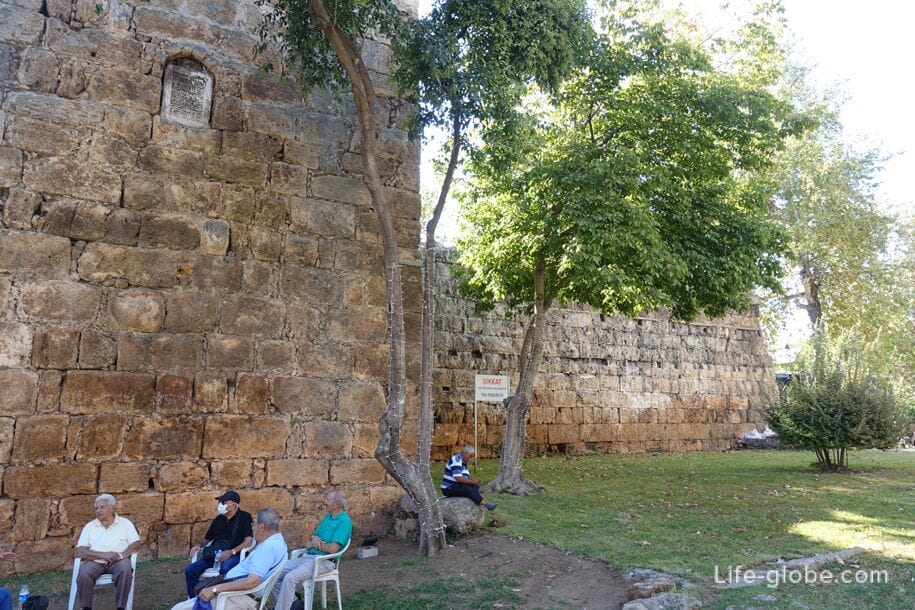
South Tower and walls
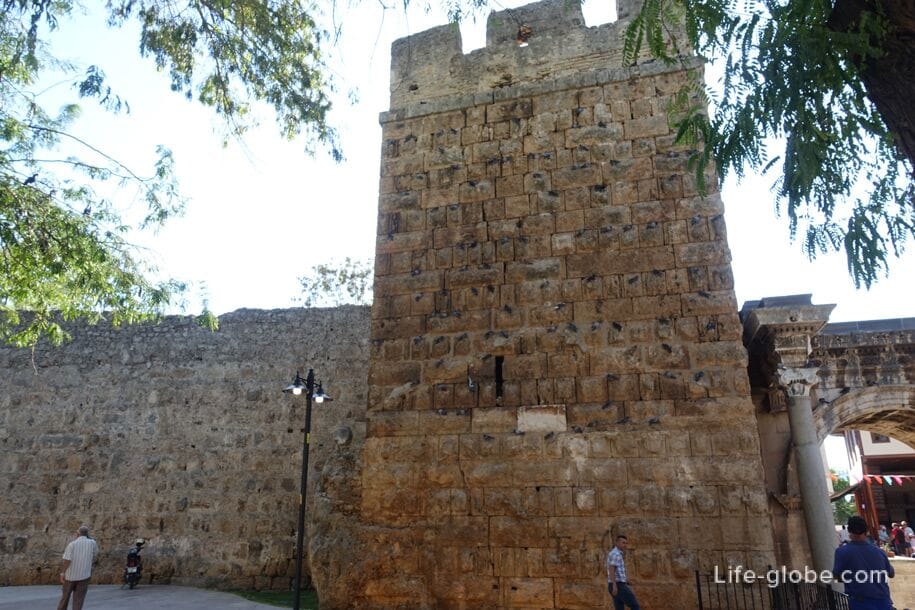
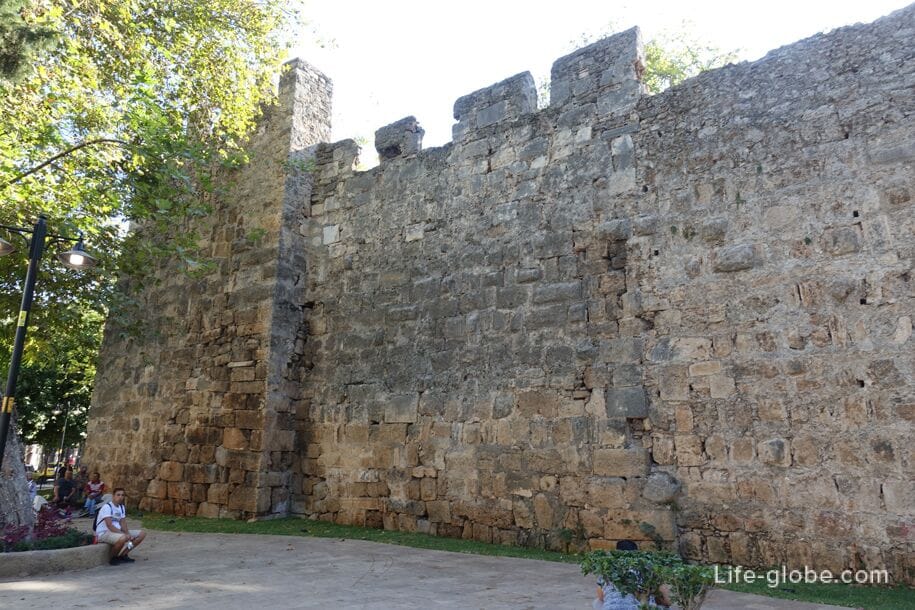
Excavations near Hadrian's Gate.
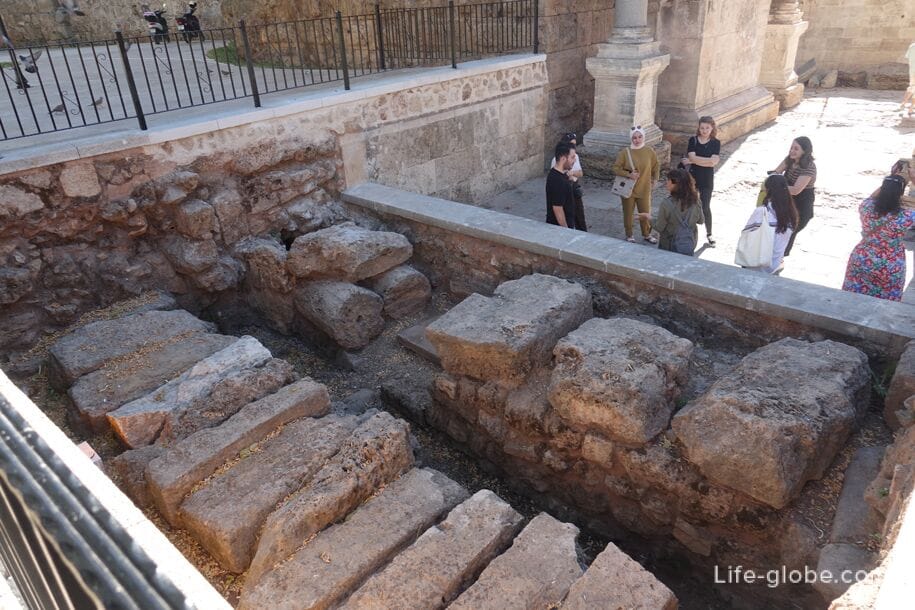
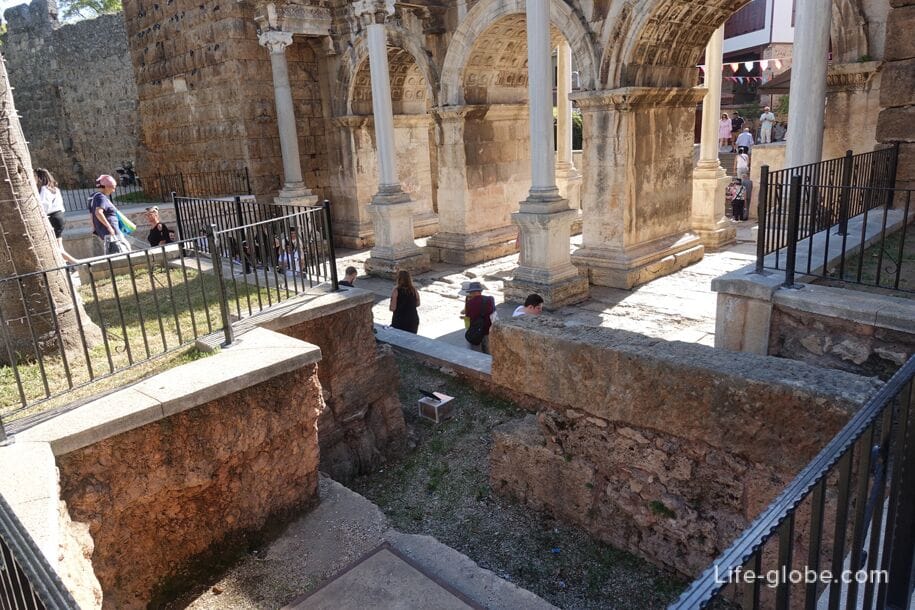
There is a local legend according to which Sultana Belkis, the Queen of Sheba, passed under this gate and enjoyed a happy day in the palace in Aspendos (an ancient Greco-Roman city) on her way to King Solomon. However, it is worth considering that the queen and Solomon lived about a thousand years before Hadrian, and if she passed through the gate, it was the previous gate.

Hadrian's Gate is available 24 hours a day.
You can inspect and pass through the gate for free.
Hadrian's Gate is located in the old town of Antalya, at Ataturk Boulevard, at: Barbaros, Hadrian Kale Kapısı, 07100 Muratpaşa/Antalya, Turkey.
Coordinates of Hadrian's Gate: 36°53'07.0"N 30°42'31.0"E (36.885278, 30.708611).
All accommodation facilities in Antalya (hotels, apartments, guest houses, etc.), including near beaches, in the historical center of the city and more remotely from those, can be view and book here